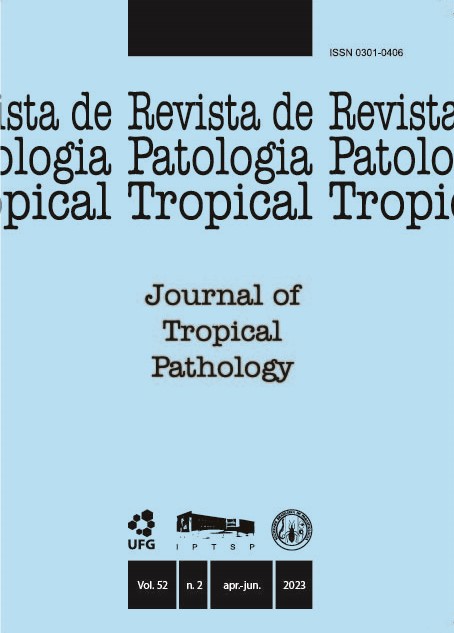Prevalence and the factors associated with pediculosis capitis in schoolchildren in the city of Niterói, Rio de Janeiro state, Brazil
DOI:
https://doi.org/10.5216/rpt.v52i2.75095Resumo
Pediculosis capitis is an ectoparasitosis that is present worldwide, with highest prevalence among schoolchildren. This parasitosis has been correlated with socioeconomic factors and individual aspects of the host, such as sex and hair characteristics. In Brazil, it has been estimated that this disease occurs in about 30% of school-age children. Based on this, the aim of this study was to evaluate the prevalence of pediculosis among schoolchildren in the city of Niterói, in the State of Rio de Janeiro (RJ), besides analyzing the relationship between positivity and the characteristics of the participating individuals. The study included 244 students from the first to the fifth grades of elementary school who underwent a scalp aspiration procedure in order to diagnose parasitosis cases. Information regarding sex, self-declared skin color, hair length and color, and curl type was collected from each participant. Statistical analysis was performed using Fisher’s exact test and logistic regression. The overall prevalence of pediculosis was 19.7%, and it was more frequent in females, with a statistically significant difference (p < 0.001). There were also statistically significant associations between positivity for infestation and the hair length (p < 0.001) and with the hair structure (p = 0.019). Being an afro-descendant, not being female and having dark hair, together, was a protective factor against pediculosis among schoolchildren. This study evidenced that the host’s sex and physical characteristics showed direct relationships with lice infestation, although it was not possible to put forward a robust model for determining the presence of pediculosis. These results point to the notion that this ectoparasitosis is a multifactor disease.
KEY WORDS: Pediculus capitis; children; associated factors.
Downloads
Downloads
Publicado
Como Citar
Edição
Seção
Licença
The manuscript submission must be accompanied by a letter signed by all authors stating their full name and email address, confirming that the manuscript or part of it has not been published or is under consideration for publication elsewhere, and agreeing to transfer copyright in all media and formats for Journal of Tropical Pathology.

